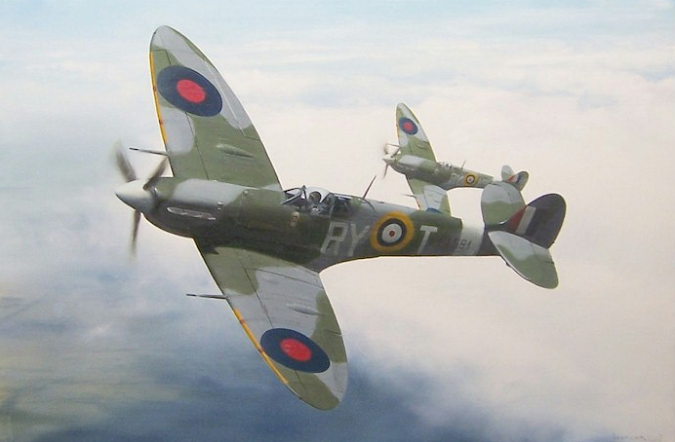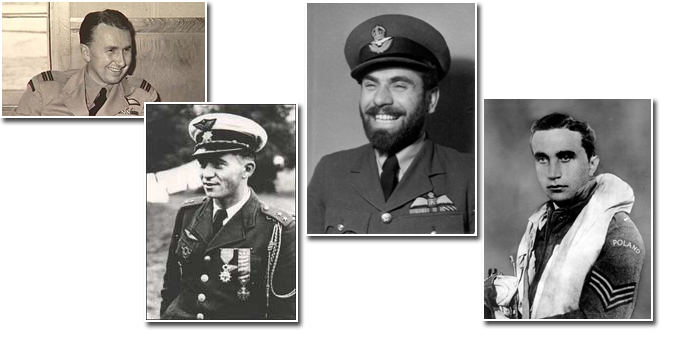“Never was so much owed by so many to so few.” – Winston Churchill
The Munich Agreement, otherwise known as the Munich Pact, was signed on September 30, 1938 between Nazi Germany, France, Italy, and the United Kingdom. With Czechoslovakia having an earlier agreement with France and the United Kingdom to protect it in case of attack or invasion. The relative ease with which the German-speaking regions of Czechoslovakia were handed over to Germany stunned many at the time. It became clear that it was only a matter of time before a military conflict would arrive. The Munich agreement spelled an escalation of hostilities and paved the way for the eventual invasion of Poland in 1939 – i.e. the official beginning of the Second World War.
With an inevitable war at the doorsteps, many Czechoslovaks left the country to the United Kingdom, Russia, and other European destinations, determined to defeat the Nazi shadow over Europe. These included politicians, ordinary families, soldiers, pilots, and Jews, many of who were lucky to have foreseen the oppression that was to follow. It was then that Eduard Beneš (the former Prime Minister and then-president of Czechoslovakia since 1935) abdicated, leaving the country in October 1938 for the United Kingdom, followed by the US, where he established himself as the representative of the Exiled Czechoslovak Government. Others followed, but perhaps the most resonant of these groups were the soldiers and pilots that played their role in defeating the forces of the Axis.
Czechoslovak Pilots
Czechoslovak pilots left in large numbers following and prior to the formation of the Protectorate of Bohemia and Moravia (Protektorat Böhmen und Mähren) on March 15, 1939, not willing to settle for the unbearable developments around them. Many wanted to join the Polish forces, but were channeled into France due to an initial lack of interest from Poland. Following growing unease, however, those remaining were later welcome only to briefly participate in Poland’s efforts to revert an overwhelming attack only soon after. Others chose to leave Czechoslovakia through Romania, ending up in France or the USSR, which initially imprisoned them, only to free them later to France and the UK. Unknown by many, German Marshall Hermann Göring (ex-pilot ace of WWI) even offered to take in 1500 Czech pilots and personnel following the formation of the Protectorate. To any clear-minded pilot, this equaled treason and betrayal.

No. 313 Czechoslovak squadron of the RAF
Among the most-known pilots were those who joined the forces of the RAF (Royal Air Force) of the United Kingdom and its allies following the Fall of France. With the UK realizing the grave and growing dangers posed by a well-armed and well-seasoned Luftwaffe (German Air force), the need for pilots and personnel was immense. While the German pilots had extensive experience from the Spanish Civil War and the Invasion of Poland, the British pilots did not. There was a dire need for trained pilots and the UK alone did not have the required amounts of personnel. Pilots from the occupied territories were therefore highly welcome. This is why, for example, the formations of Czechoslovak pilots were formed prior to any official agreement with the exile government. Within a very short time, the exiled government agreed with the UK to create the following squadrons, some of which would soon fight at the Battle of Britain (July 10 – October 31, 1940), which was a defensive battle as a response to Germany’s bombing raids:
№ 310 Fighter Squadron, formed June 12. 1940, based at Duxford
№ 311 Bombing Squadron, formed July 29. 1940, based at Honnington
№ 312 Fighter Squadron, formed September 5. 1940, based at Duxford
№ 313 Fighter Squadron, formed May 10. 1941, based at Catterick
There were about 100 further Czechoslovaks that were integrated as part of other Allied squadrons. Although not specifically Czechoslovak Squadrons, Squadron No 1 and No 68 had notable Czechoslovak presence. In fact, this was so apparent that Squadron 68 carried the motto ‘Vždy připraven’ (‘Always ready’). Squadron 1, on the other hand, was allocated a considerable boost of 31 Czechoslovak pilots.
The overall number of Czechoslovaks in the RAF amounted to a number some claim to have exceeded 2500. What should be stressed for an accurate understanding of the historical situation is that 1/5th of the entire RAF was composed of non-British personnel, pilots included. To mention the largest groups, these were members of the Commonwealth, Poland (147), Czechoslovaks (87), Belgians (29) and so on. Without these people, the results may have well been entirely different. With a production rate of 300 airplanes a week, it would be an effort in vain without the pilots to fly them. Czechoslovak pilots played a major role in this.
Below are some of the most famous Czechoslovak pilots to have served in the RAF and allied armies:

Czechoslovak Pilots of the RAF
Karel Miloslav Kuttelwascher (“Kut”) – One of the highest scoring RAF fighter aces: the best RAF night intruder, 6th best night fighter, 18 confirmed kills (many sources attribute 20). He is often referred to as the Night Hawk for his exemplary skills at night.
Sergeant Josef František DFM– The highest scoring Battle of Britain Ace, who survived it with 17 confirmed kills – KIA October 8, 1940. He is known for his lack of discipline while in air and for downing the 17 airplanes within a short period of only 4 weeks. For this, he is often referred to as the Lone Wolf.
Lieutenant General František Fajtl – Although not an ace, he is one of the best known pilots and one of few to be shot down above Nazi-controlled France, evade capture, and return to UK to fight again. He flew in the Battle of Britain under the RAF, led a group of Czechoslovaks under the patronage of the Soviet Air Force and participated in the fight during the Slovak National Uprising.
Wing Commander František Peřina – considered one of the most successful Czech fighter pilots to serve in WWII, Peřina is credited with 15 confirmed downed enemy planes. He flew for France, then the RAF, heading the RAF Czech Squadron 312. He is sometimes dubbed the “General of the Skies”, primarily for his natural authority and respect.
Allied airmen had much less training and experience when compared to their German counterparts, many of whom were already battle-hardened from conflicts like the Spanish Civil War. Fighting them was therefore an extremely brave and heroic act on its own. James Edgar Johnson, the best British ace had 38 confirmed and 3 probable kills. For the sake of comparison, the best German ace, Erich Alfred “Bubi” Hartmann, is credited with 352 confirmed downed enemy planes – all in 1456 missions. He is often dubbed the “Ace of Aces” for his proficiency in aerial combat. Interestingly, while many of Germany’s aces fought throughout the entire war, a large portion of the Allied aces were instead tasked with training new pilots – disallowing them from further successes, but allowing for easier replenishment with new pilots.
Operation Athropoid – “The Assassination”
Many non-pilot military personnel also left the country for the same reasons as the pilots. Many wanted to fight the oppressors and free Czechoslovakia from the hands of the forces that occupied it. Following the formation of the Protectorate, Reinhard Heydrich was appointed the Deputy Reich-Protector, at that time considered to be the second highest ranking Nazi officer following Hitler. He is infamous for being one of the main architects of The Holocaust and his iron hold on the territory was passionately despised by the local population.
This lead to serious underground opposition and sowed the idea that he should be removed. As part of Operation Anthropoid, a Czechoslovak team was assembled by the exiled government in the UK. After training from the UK Special Operations Executive, its sole role was to be sent to the occupied territory, liaise with the underground and assassinate him. Two groups (Group A and Group B) were dispatched on December 28, 1941. Jozef Gabčík (Slovak) and Jan Kubiš (Czech) were the two soldiers to carry out the assassination in Prague on May 27, 1942. As Heydrich took his daily commute from Panenské Břežany to Prague, he was interrupted by Gabčík and Kubiš near the Bulovka Hospital. Gabčík’s machine gun jammed and Kubiš had to step in by stopping the vehicle with a grenade. The grenade disabled the car and severely injured the Protector including Kubiš. Heydrich died of his injuries on June 4, 1942.
The Czechoslovak team, including many of those that helped, were identified following the interrogation of Karel Čurda by the Gestapo, and later killed by the Germans in the Church of Saints Cyril and Methodius in Prague. Following the assassination and death, about 1300 people were murdered and the entire village of Lidice burned to the ground in retaliation. On June 9, the village was surrounded, and men, women, and children were seperated. All men older than 16 were killed, and only 153 women and 17 children survived to tell the story – following their return from concentration camps.
The Few That Changed History
Although countless pages could be written on the topic, all of the above people had one thing in common: the drive and determination to fight oppression and evil in the vision of a free society and a free Europe. Czechoslovaks, both ordinary and military, played a major role in the course of the War and together with the Allies, helped defeat the Germans. Their role should never be forgotten. As George Santayana once said, “A country without a memory is a country of madmen.”












 Reading time: 7 minutes
Reading time: 7 minutes 

















